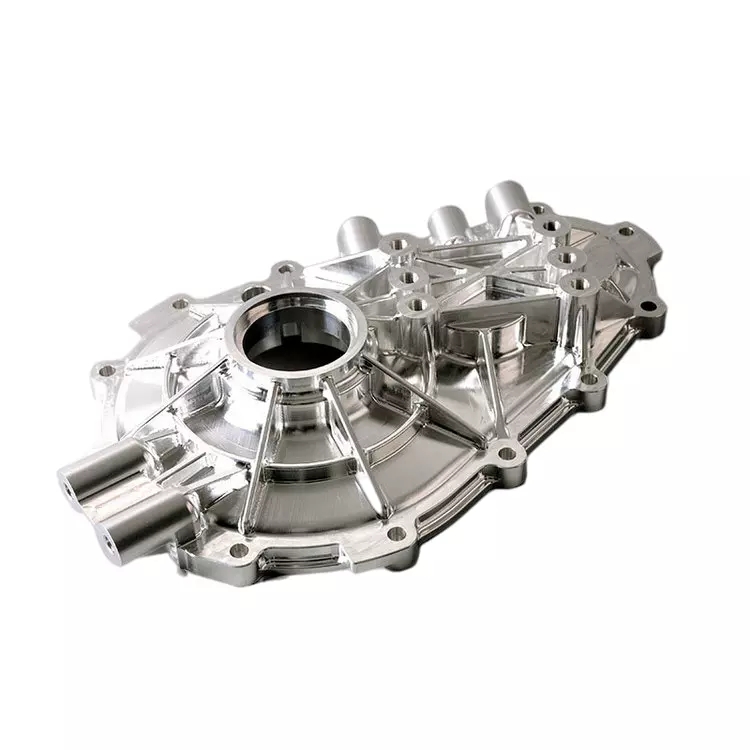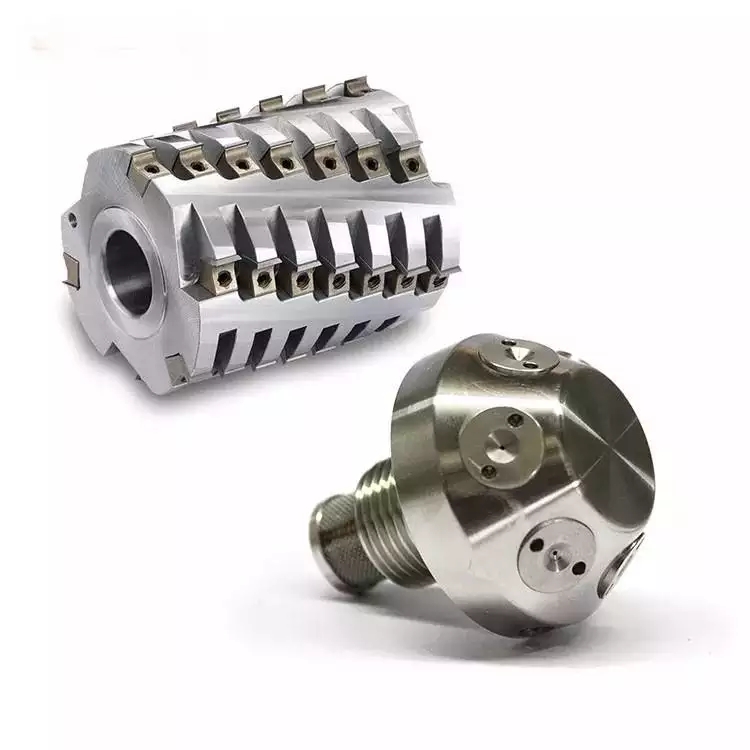NPI Manufacturing Guide: Concept to Production|CNC
 May 06,2025
May 06,2025

All manufacturing industries introduce new products to the market to compete successfully with other industries. The success of each product is critical and depends on careful planning and execution in areas from designing to supply chain management and industrialization. NPI stands for in engineering is new product introduction which manages these activities as a part of main planning. This article provides insights to help industries efficiently convert ideas into products with minimum risks.
What Is NPI (New Product Introduction) in Manufacturing Process?
NPI is a systematic approach in the manufacturing process which creates a product from ideas to its final manufactured form. It is a critical process to manage and optimize the introduction of new products in the production line with quality, cost-effectiveness and efficiency
NPI vs. Traditional Product Development
NPI meaning in manufacturing is production and introduction of new or improved products emphasizing systemic, repeatable steps and supply chain management. Traditional product developments cover the entire production process from initial idea to commercialization encompassing design, validation and industrialization.
Why NPI Is Critical for Faster Time-to-Market
It is important for faster time-to-market because it offers a systemic and structure process to bring a product from ideas to market, reforming manufacturing, supply chain and reducing bottlenecks.
Why NPI Should Be Your First Step in Development?
NPI meaning in supply chain is streamlining the large production process, leading to faster time-to-market, being cost-effective and providing higher-quality products.

NPI Manufacturing and CNC Machining
New product development (NPD) combined with CNC machining represents a structured approach to launching new products cost-effectively and efficiently particularly when customs or complex designs are involved, especially in large batches.
The 6 Key Phases of a Robust NPI Process
Robust NPI process typically has six key phases: define, feasibility, design, CNC prototype, validation and product launch.
Phase 0 – Market & Concept Screening
It focuses on clearly demonstrating the product idea, features, and target market by understanding customer need and identifying value proportion of product.
Phase 1 – Feasibility & Business Case
The viability of product concepts is assessed by evaluating technical feasibility, market demand and financial implications in new product development.
Phase 2 – Detailed Design & DFM/DFA Reviews
It focuses on designing the product to clearly define the specifications and functional requirements for prototyping
Phase 3 – Prototyping & EVT (Engineering Validation Testing)
It focuses on creating prototypes to meet the design specifications
Phase 4 – DVT & PVT (Design / Production Validation)
It is crucial stage of testing and validation of product to ensure product meet quality standards and user expectations.
Phase 5 – Ramp-Up to Mass Production & Launch
It focuses on mass production to set up the manufacturing process, establish a supply chain and make the product ready to launch in new product development.

What's Validation Testing (EVT → DVT → PVT)
Validation testing is a sequential process in product development to check functionality of product and to ensure it can be manufacturable and mass produced.
Engineering Validation Testing (EVT)
This initial stage verifies the product design at component level and carries out functional testing, performance evaluation and ensure each part meets specifications,
Design Validation Testing (DVT)
It validates the mass production of products, and all the components integrate seamlessly by testing manufacturing tolerances and assembly process.
Production Validation Testing (PVT)
The final stage of validation before mass production and product is tested in real-world environments.
What are Cross-Functional Teams and Their Roles
In NPI, cross functional teams are groups of individuals with different functional backgrounds collaborating to achieve common goals.
Product Management & Marketing
It ensures product development aligns with customer needs, business objectives and market trend. The team work together to develop product features and functionality considering the customer need.
Design & Engineering

Design team collaborates with engineers to create user-friendly products with high technical feasibility, reliability and performance of products using tools like CAD/CAM for design for manufacturing and assembly (DFM/A) and analyzing the individual part tolerance accumulating in assembly.
Manufacturing & Quality
The manufacturing team collaborates with engineers and quality control to validate product efficiency and cost-effectiveness while maintaining high quality. Quality control identifies defects that prevent a product from meeting quality specifications
Supply Chain & Procurement
Procurement such as identifying suppliers, negotiating contracts and ensuring material resourcing is cost effective. Supply chain ensures materials are delivered on time and meeting production schedule. Cross functioning improves supplier relationships and reduces lead time.
How to Improve the NPI Process?
There are a few ways to improve the NPI process which are discussed below:
Build Quick Prototypes First
It allows early testing and validation of design concepts and helps to identify potential risk in the development stage
Get Supplier Feedback Early
Engaging with supplier provides valuable insights into manufacturing feasibility, material availability and potential risks in the NPI process.
Track Progress Weekly
It establishes a regular pace for tracking progress by meeting or reporting and identifies potential delays and bottlenecks
Run a Small Pilot Build Before Ramp-Up
It refines the manufacturing process before mass production and identifies potential risks in assembly line and validates product quality at an earlier stage.
Rapid Prototyping & CNC in NPI
CNC machining allows quick and accurate design modifications to make it suitable for testing and validation of new design for rapid CNC prototyping.
When to Use CNC Machining for Iterations
CNC machining allows rapid CNC prototyping, testing new designs and easy modification and improvements for rapid design iterations and testing.
Bridge Tooling & Low-Volume Builds Before Hard Tooling
CNC is more cost effective than hard tooling for bridge tooling and low volume during design evolution. It reduces lead times and makes design stability without committing to expensive hard tooling.
Design-for-Machining Tips
To cut lead time and cost in CNC machining, material selection is critical and depends on machinability, cost and performance. Feature design with small details, sharp corners must be avoided and establish realistic tolerance.
NPI&NPD and Large Batch CNC Machining
Large batch CNC machining in NPI and NPD offers benefits like efficiency, precision, and consistency, but also has some drawbacks which are discussed below.
Benefits of Large Batch CNC Machining
- It speeds up production and simplifies the process in mass production for NPI and NPD.
- It offers high accuracy and repeatability in product quality
- CNC machines offer excellent consistency and uniformity in product quality
- It reduces human error and reduces extensive manual labor
Drawbacks
- Initial costs are very high for large batch CNC machining for NPI and NPD
- Regular maintenance is mandatory for optimal performance
- Complexity increases because it requires specialized knowledge and expertise.
Conclusion
NPI helps industries minimize delays and get products to market quickly by carefully planning and executing the development and launch of products. It ensures all stakeholders are aligned with the vision and scope, minimizing rework and risks associated with development and manufacturing. NPI, when combined with CNC machining, offers control over the entire process precisely from the initial concept to the final product.
FAQs
How long should a typical NPI cycle take?
NPI cycle takes three months to one and half years depending on product complexity and organizational efficiency.
How early should suppliers be involved in NPI?
Supplier should be involved as early as possible, preferably at concept or initial phase.
 Tel/WeChat:
Tel/WeChat:  Email:
Email: 
 Home
Home
 Press Fit Tolerance Guide: How to Achieve Precision Machining
Press Fit Tolerance Guide: How to Achieve Precision Machining 







